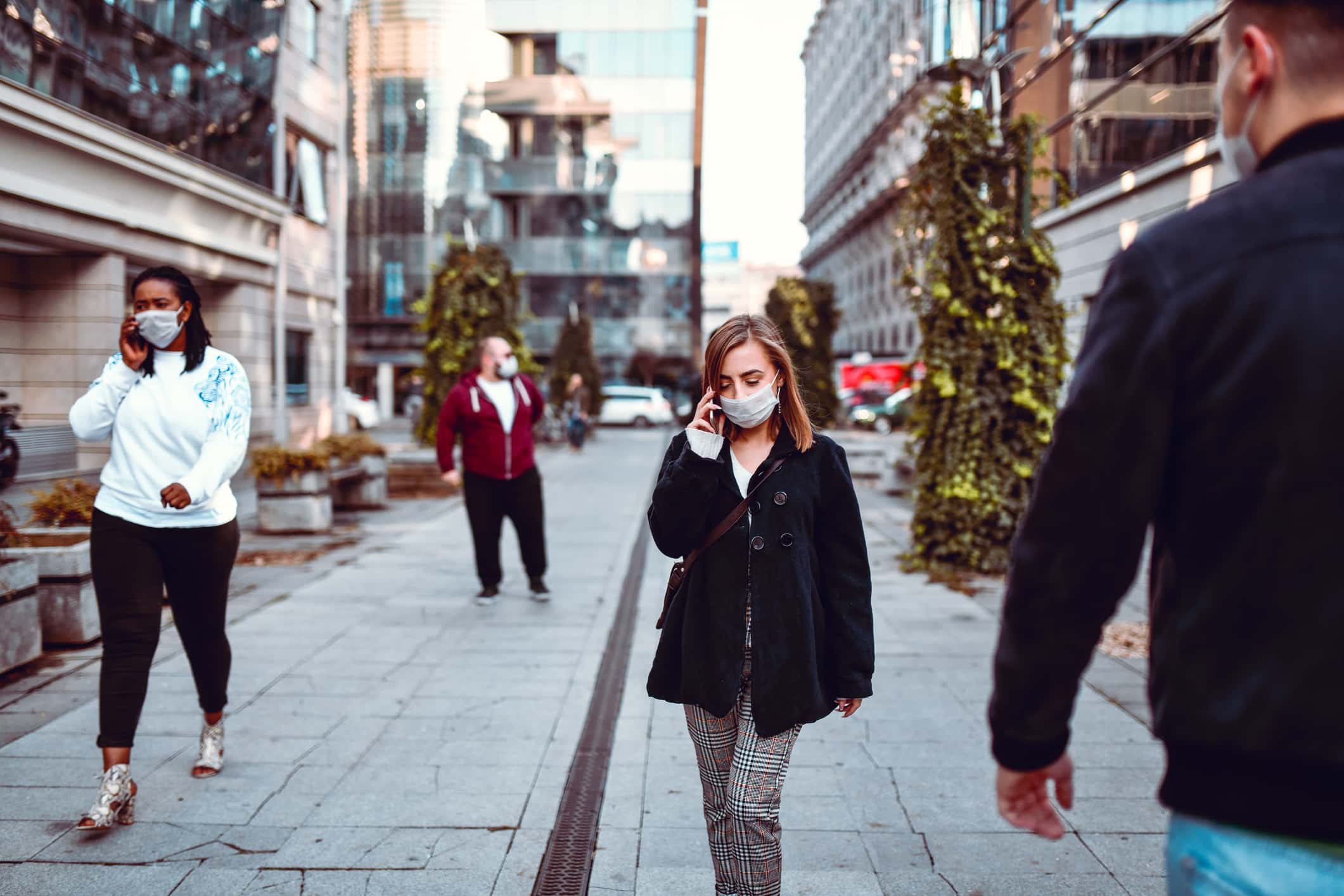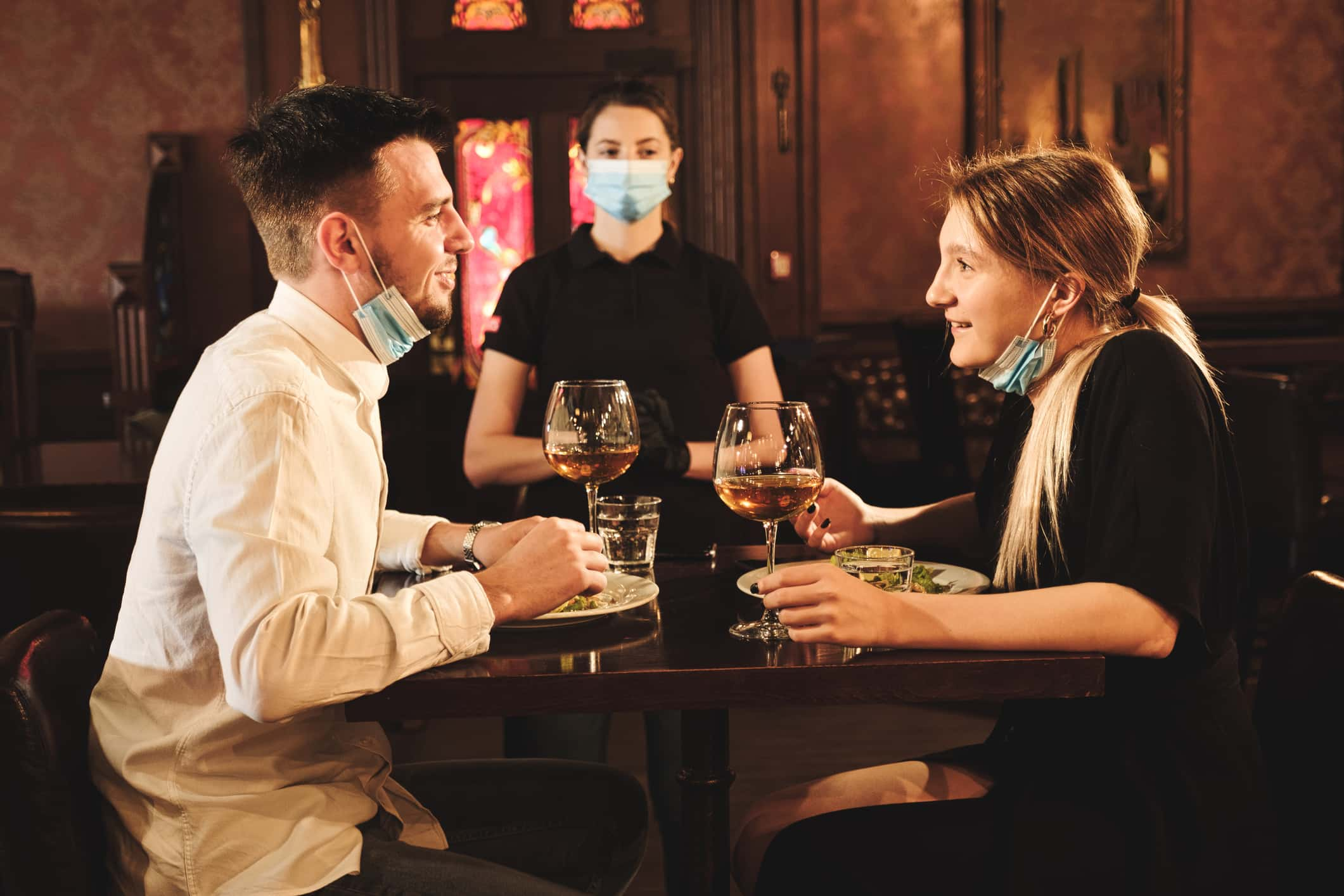Face masks reduce New York coronavirus cases by over 66,000, study deems it most effective way to check spread

Health experts have been advising people to wear face masks in public to prevent the spread of Covid-19 and now numbers indicate that it works. A new study shows that wearing a face mask dramatically decreases a person's chances of being infected by the new coronavirus. Researchers found that using a face mask alone reduced the number of Covid-19 infections by more than 66,000 in New York City from April 17 to May 9.
The team — which includes experts from Texas A&M University, The University of Texas at Austin, California Institute of Technology and University of California San Diego — examined the chances of Covid-19 infection and how the virus is easily passed from person to person. From trends and mitigation procedures in China, Italy and New York City, they also found that face masks reduced the number of infections by more than 78,000 in Italy from April 6 to May 9. The findings have been published in the Proceedings of the National Academy of Sciences (PNAS).
According to the analysis, other mitigation measures such as social distancing implemented in the US are insufficient by themselves in protecting the public. They conclude that wearing face masks in public corresponds to the most effective means to prevent interhuman transmission and this inexpensive practice, in conjunction with simultaneous social distancing, quarantine and contact tracing, represents the most likely fighting opportunity to stop the Covid-19 pandemic.
"Our results clearly show that airborne transmission via respiratory aerosols represents the dominant route for the spread of Covid-19. By analyzing the pandemic trends without face-covering using the statistical method and by projecting the trend, we calculated that over 66,000 infections were prevented by using a face mask in little over a month in New York City. We conclude that wearing a face mask in public corresponds to the most effective means to prevent inter-human transmission," says Renyi Zhang, Texas A&M distinguished professor of atmospheric sciences and the Harold J Haynes Chair in the College of Geosciences, in the study.
The researchers say that in the US, social distancing and stay-at-home measures, in conjunction with hand sanitizing were implemented during the initial stage of the pandemic (March 16). The team argues that these measures minimized "short-range contact transmission" but did not prevent long-range airborne transmission, responsible for the inefficient containing of the pandemic in the US. "Mandated face covering, such as those implemented in China, Italy, and NYC, effectively prevented airborne transmission by blocking atomization and inhalation of virus-bearing aerosols and contact transmission by blocking viral shedding of droplets," they add.
The team argues that social distancing measures including city lockdown and stay-at-home orders were implemented well before face covering was mandated in Italy and NYC, and this sequence left an extended window (28 days in Italy and 32 days in NYC) for largely uninterrupted airborne transmission to spread the disease. "The simultaneous implementation of face covering and social distancing, such as that undertaken in China, was most optimal, and this configuration, in conjunction with extensive testing and contact tracing, was responsible for the curve flattening in China," says the study.

The analysis reveals that the difference with and without mandated face-covering represents the determinant in shaping the trends of the pandemic, say experts. They explain that curbing the coronavirus pandemic relies not only on decisive and sweeping actions but also, critically, on the scientific understanding of the virus transmission routes, which determines the effectiveness of the mitigation measures. "Our work suggests that the failure in containing the propagation of the Covid-19 pandemic worldwide is largely attributed to the unrecognized importance of airborne virus transmission. Our work also highlights the necessity that sound science is essential in decision-making for the current and future public health pandemics," says the team.
Meanwhile, the US Centers for Disease Control and Prevention (CDC) has issued new guidelines, which say that personal prevention practices — such as handwashing, staying home when sick, maintaining 6 feet of distance, and wearing a cloth face covering — and environmental prevention practices such as cleaning and disinfection, are important ways to prevent the virus’s spread.
The agency urges organizers of large gatherings that involve "shouting, chanting or singing" to strongly encourage the use of cloth face coverings and lower coronavirus transmission. "Cloth face coverings are strongly encouraged in settings where individuals might raise their voice (for example, shouting, chanting, singing)," says the CDC in its guidance on "Considerations for Events and Gatherings". "If transport vehicles like buses are used by the event staff, drivers should practice all safety actions and protocols as indicated for other staff — for example, washing hands often and wearing cloth face coverings and maintaining social distance of bus riders," it recommends.
The CDC has released another list of suggestions called "Deciding to Go Out". Both advisories are meant to help individuals reduce risks as America reopens. The guidance warns that the more closely a person interacts with others and the longer that interaction, the higher the risk of Covid-19 spread. It suggests that if people decide to engage in public activities or run an errand, items on hand should include a cloth face covering, tissues, and hand sanitizer with at least 60% alcohol. "It’s important that you and the people around you wear a cloth face covering when in public and particularly when it’s difficult to stay 6 feet away from others consistently," says CDC.

Widespread face mask use could shrink reproduction number
According to another study, population-wide use of face masks can keep the coronavirus reproduction number — the number of people who can contract the virus from an infected individual — under 1 and can prevent further waves of the virus when combined with lockdowns. The reproduction number needs to stay below 1 for the pandemic to slow. The modeling study, led by the University of Cambridge, suggests that lockdown alone will not stop the resurgence of Covid-19 and that even homemade masks with limited effectiveness can dramatically reduce transmission rates if worn by enough people, regardless of whether they show symptoms. The findings have been published in the Proceedings of the Royal Society A.
For the latest study, Cambridge researchers worked to link the dynamics of the spread between individuals with population-level models, assessing varying degrees of face mask adoption combined with periods of lockdown. The modeling included the different stages of infection and transmission via surfaces as well as air. Researchers also considered negative aspects of mask use, such as increased face touching. The research team found that if people wear masks whenever they are in public, it is twice as effective at reducing the reproduction number than if masks are only worn after symptoms appear. In all modeling scenarios, routine face mask use by 50% or more of the population reduced Covid-19 spread to a reproduction number less than 1, flattening future disease waves and allowing less-stringent lockdowns, shows analysis.
Viral spread reduced further as more people adopted masks when in public. 100% mask adoption combined with on/off lockdowns prevented any further disease resurgence for the 18 months required for a possible vaccine, say researchers. The analysis suggests that — while the sooner the better — a policy of total face mask adoption can still prevent a second wave even if it is not instigated until 120 days after an epidemic begins (defined as the first 100 cases). "Our analyses support the immediate and universal adoption of face masks by the public. If widespread face mask use by the public is combined with physical distancing and some lockdown, it may offer an acceptable way of managing the pandemic and reopening economic activity long before there is a working vaccine," says lead author Dr Richard Stutt, part of a team that usually models the spread of crop diseases at Cambridge’s Department of Plant Sciences, in the report.